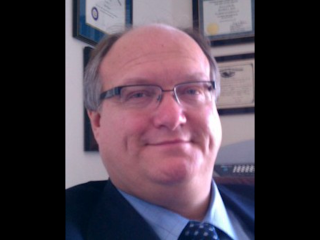In DUI cases it is important to present evidence to show your client was not driving with a BAC of .08 at the time of driving. If no evidence is introduced to refute this, the prosecution will ask to have the trier of fact “presume” the BAC reported was the actual blood alcohol level of your client at the time of driving.
California Vehicle Code Section 23152 (b) in relevant part provides: “In any prosecution under this subdivision, it is a rebuttable presumption that the person had 0.08 percent or more, by weight of alcohol in his or her blood at the time of driving the vehicle if the person had 0.08 percent or more, by weight, of alcohol in his or her blood at the time of the performance of a chemical test within three hours after the driving.”
“A rebuttable presumption requires the trier of fact, given a showing of the preliminary fact (here, that a chemical test result showed plaintiff had a BAC of 0.08 percent or more within three hours of driving), to assume the existence of the presumed fact (here, that plaintiff had been driving with a prohibited BAC) ‘unless and until evidence is introduced which would support a finding of its nonexistence, in which case the trier of fact shall determine the existence or nonexistence of the presumed fact from the evidence and without regard to the presumption.’ [Citation.] In other words, if evidence sufficient to negate the presumed fact is presented, the presumption disappears and “has no further effect”, although ‘inferences may nevertheless be drawn from the same circumstances that gave rise to the presumption in the first place.’” (Coffey v. Shiomoto (2015) 60 Cal.4th 1198, at pp. 1209–1210.)
In this case the testimony of the expert constituted evidence that, if believed, would support a finding of the nonexistence of the presumed fact—that the driver’s BAC was 0.08 or above at the time of driving. The expert’s testimony was founded on the recency of the driver’s drinking and was clear, direct and credible. Thus, the presumption disappeared and the trier of fact was required to weigh all the evidence and inferences to reach a determination regarding the driver’s BAC at the time of driving. The prosecution was required to rebut the evidence presented and failed to do so. Here, there was no evidence presented, no expert evidence contradicting the expert’s opinions and conclusions; the prosecution presented no evidence challenging the factual bases of the expert’s opinions.
Based on the evidence presented at the hearing, including the expert testimony, we submit substantial evidence supports the determination that the driver rebutted the three-hour presumption and the weight of the evidence was in the driver’s favor.
Furthermore, in criminal prosecutions special rules apply:
"The California Supreme Court has held that a jury
instruction phrased as a rebuttable presumption in a criminal case creates an unconstitutional mandatory presumption.
(People v. Roder (1983) 33 Cal.3d 491, 497-505. In accordance with Roder, the jury instructions have
been written as “permissive inferences."
